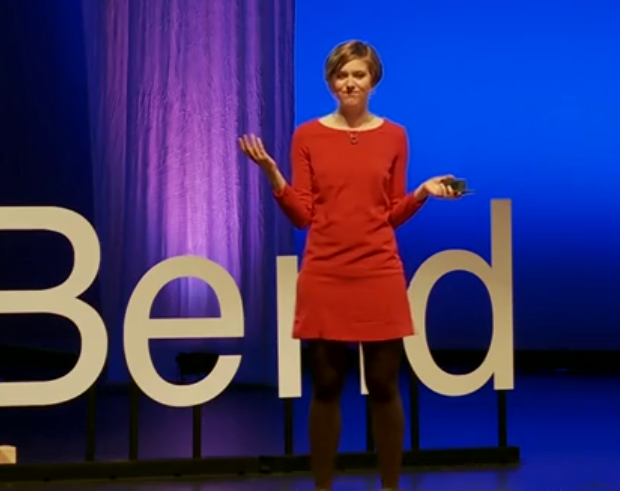So, in this suburb, the poo and the pee and the wash water are going to this treatment plant right in the middle of the community.
那么,在这片城郊,各种排泄物们和废水正涌向处于区域中心的处理池。
It looks more like a park than a treatment plant.
其实与其说处理池,它看起来更像一个公园。
The poo at the very bottom of all those layers of gravel -- not touching anyone
那些处于所有砂砾层最下方的粪便们--不与其它成员接触
is providing solid food for those marsh plants.
为沼泽植物提供了固体养料。
And the clean, clear water that comes out the other end is traveling underground to water each person's yard.
在另外一头出去的清澈而干净的水会从地下运输用于灌溉每个人的庭院。
So even though they're in a desert, they get their own personal oasis.
所以即使他们身处沙漠之中,他们也可以拥有私人绿洲。
This approach is called Integrated Water Management, or holistic or closed-loop.
这种方法被称为水资源综合治理,也可以说成全面治理或循环利用。

Whatever you want to call it,
你们想叫它什么都可以,
it's in conflict with the status quo of how we think about sanitation, which is contain, treat, push it away.
但它与我们目前对卫生设施体系的看法(收集,处理,排放)是相悖的。
But in this approach, we're doing one step better.
在这套系统中,我们做的更好。
We're designing for reuse from the very beginning,
我们一开始就设计成了循环利用。
because everything does get reused, only now we're planning for it.
由于所有的东西都希望被再利用,直到现在我们还在继续规划。
And often, that makes for really beautiful spaces.
经常,这套系统能帮助创造美妙的空间。
But the most important thing about this system isn't the technicals of how it works.
但是对于这个体系来说,最重要的不是其科技原理,
It's how you feel about it. Do you want this in your yard? Why not?
而是你们对它的感觉。你们希望在你们的后院中拥有它吗?为啥不呢?
I got really curious about this question.
我对这个问题十分好奇。
Why don't we see more innovation in sanitation?
为什么我们没有在污水处理中看到革新?
Why isn't that kind of thing the new normal?
为什么革新迟迟不来?
And I care so much about this question, that I work for a nonprofit called Recode.
我真心关心这个问题,之后我为非营利性组织“科技投资新闻资讯网”工作。



